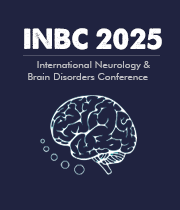Title : Assessing the role of neurogenesis in learning & memory following exposure to High Frequency Head Impacts (HF-HI) and Controlled Cortical Impacts (CCI)
Abstract:
Neurogenesis in the hippocampal dentate gyrus (HDG) is linked to learning and memory and contributes to normal hippocampal function, and TBI has been shown to disrupt the normal process of neurogenesis (Leng & Bonaguidi., 2018).Due to the different TBI models and available, the extent of neurogenesis occurrence remains contradictory while increased, decreased, and unchanged neurogenesis have been reported in the literature following TBI (Wang et al., 2016). This study compared neurogenic responses following two models of TBI in mice: Controlled Cortical Impact (CCI) and High-Frequency Head Impact (HFHI). Using doublecortin (DCX) as a marker for immature neurons, we observed a significant decrease in DCX-positive cells in the dentate gyrus of CCI mice compared to both sham and HFHI groups at 3 days post-injury. This reduction may reflect either increased neuronal death or suppressed neurogenesis. Although HFHI mice showed a slight decrease in DCX-positive cells relative to sham, the difference was not statistically significant, suggesting reduced cell death in the HFHI model. Increasing the severity of CCI from 0.5 mm to 2.0 mm further reduced DCX expression, highlighting a dose-dependent impairment of neurogenesis. These findings were paralleled by behavioral deficits on the Morris Water Maze (MWM) test, indicating that injury severity is linked to impaired hippocampal function. The loss of neurogenesis may stem from the heightened vulnerability of newborn neurons to TBI-induced apoptosis. Future studies should quantify apoptotic markers across time points to better understand the temporal dynamics of post-injury neurogenesis.



